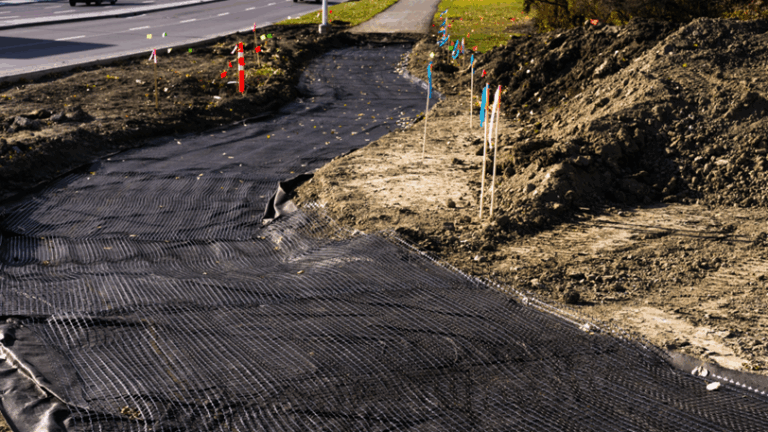
If you’ve ever watched a freshly graded road start to rut after the first rain or seen a drain line clog with silt, you already know why geotextile fabric matters. It’s one of those behind-the-scenes materials that quietly keeps everything working right.
At Stevenson Supply & Tractor Co., we’ve been helping contractors, farmers, and public works crews find the right geotextile filter cloth in Mendocino County for over a century. Whether you’re managing a slope, laying down a driveway, or lining a drainage trench, a little know-how goes a long way.
So, let’s break down what makes these fabrics tick and how to get the most out of them on your next job.
In simple terms, geotextile fabric is a tough, water-permeable layer that helps separate, protect, and stabilize soil. Think of it as the barrier that keeps your gravel where it belongs and your drainage lines clear.
It’s made from synthetic fibers, usually polypropylene or polyester, and comes in two basic styles: woven and nonwoven. Each one has its own strengths depending on what you’re building.
Here in Mendocino County, with steep hills, heavy winter rains, and clay-heavy soils, picking the right type of geotextile filter cloth can make the difference between a job that lasts and one that doesn’t.
You have some options for geotextiles:
If you’re not sure which way to go, stop by our yard or give us a call, we’ve helped plenty of local crews figure out what’ll hold up best in our soils.
No matter what kind of geotextile you’re using, prep work makes or breaks the job.
Here’s the quick checklist before you roll anything out:
✅ Clear away rocks, roots, and sharp debris.
✅ Smooth out low spots and soft pockets.
✅ Compact the base evenly, especially if you’re laying road fabric.
If the surface isn’t prepped right, even the best geotextile won’t do its job.
A lot of people underestimate this part. Overlaps and seams can make or break your installation.
If you’ve ever had fabric shift while you’re backfilling, you know how frustrating it is. Take a little extra time to secure it tight, it’ll save headaches later.
Geotextile fabrics are tough but not indestructible. When backfilling or spreading rock:
A small tear can turn into a big failure if left unchecked. Treat it like a protective layer, it’s there to make everything else last longer.
Geotextiles come in different weights, kind of like choosing the right grade of chain for a load.
Here’s a quick cheat sheet:
In Mendocino County’s mix of wet winters and clay-heavy soils, a medium or heavyweight geotextile filter cloth is usually the best bet for durability and drainage.
You don’t have to babysit it forever, but a quick check after big rains or grading work helps catch issues early:
A five-minute inspection can save you from redoing a whole section later on.
At Stevenson Supply & Tractor Co., we’ve spent more than 100 years helping contractors, growers, and agencies across Northern California find the right materials for tough jobs. From erosion control blankets to rolls of geotextile filter cloth in Mendocino County, we’ve got the products and experience to back you up.
Stop by the shop, give us a call at (707) 575-3335 or contact us online now to talk about your project needs today.